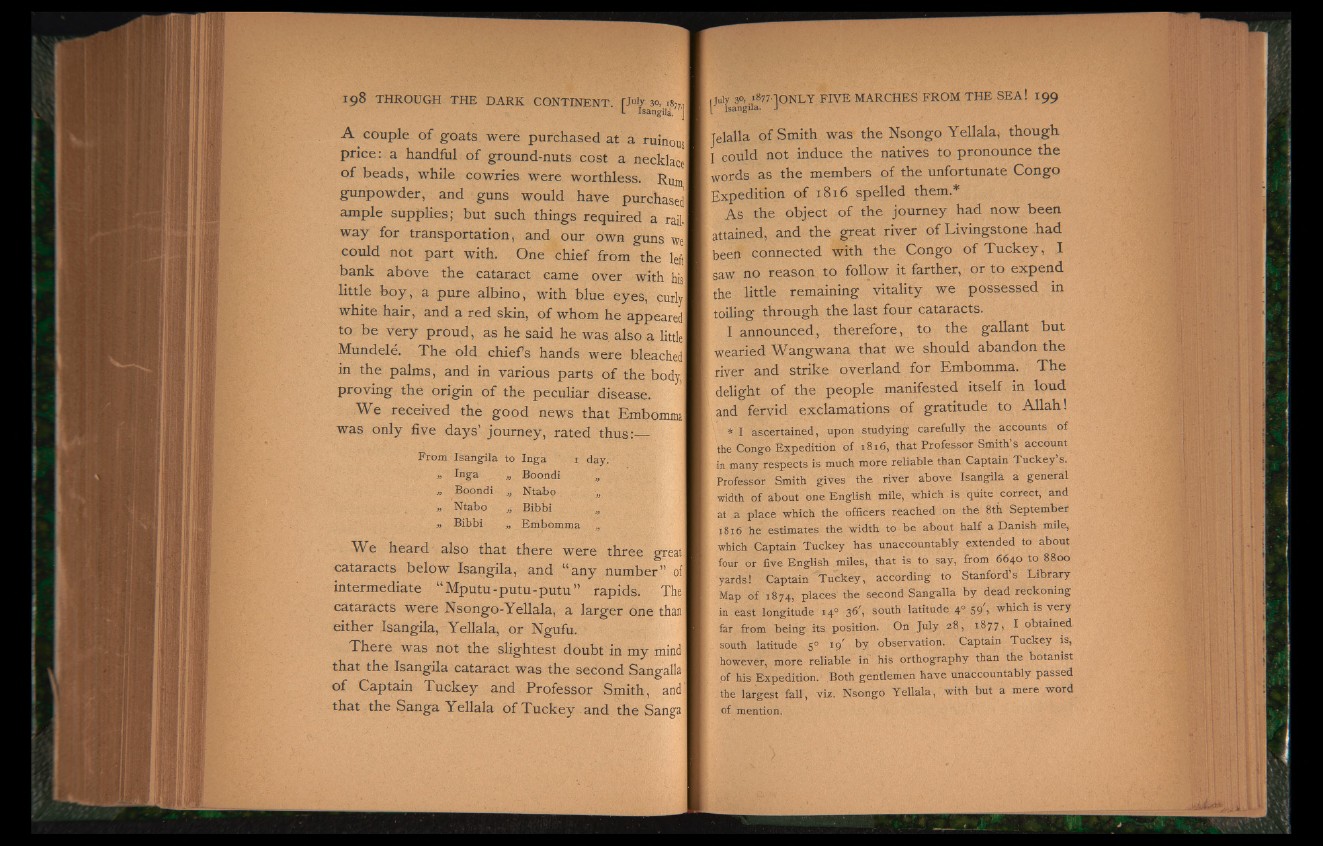
A couple of goats were purchased at a ruinous
price: a handful of ground-nuts cost a necklace
of beads, while cowries were worthless. RUm
gunpowder, and guns would have purchased
ample supplies; but such things required a rail-'
way for transportation, and our own guns we
could not part with. One chief from the left!
bank above the cataract came over with his
little boy, a pure albino, with blue eyes, curly!
white hair, and a red skin, of whom he appeared]
to be very proud, as he said he was also a little
Mundelé. The old chiefs hands were bleached)
in the palms, and in various parts of the body,!
proving the origin of the peculiar disease.
We received the good news that Embomma
was only five days’ journey, rated thus:—
From Isangila to Inga i day.
„ Inga „ Boondi „
„ Boondi „ Ntabo ;
„ Ntabo „ Bibbi „
„ Bibbi „ Embomma „
We heard also that there were three great
cataracts below Isangila, and “ any number” of.
intermediate “Mputu-putu-putu” rapids. The!
cataracts were Nsongo-Yellala, a larger one than
either Isangila, Yellala, or Ngufu.
There was not the slightest doubt in my mind
that the Isangila cataract was the second Sangalla
of Captain Tuckey and Professor Smith, and
that the Sanga Yellala of Tuckey and the Sanga
Jelalla of Smith was the Nsongo Yellala, though
I could not induce the natives to pronounce the
words as the members of the unfortunate Congo
Expedition of 1816 spelled them.*
As the object of the journey had now been
attained, and the great river of Livingstone had
been connected with the Congo of Tuckey, I
saw no reason to follow it farther, or to expend
the little remaining vitality we possessed in
toiling through the last four cataracts.
I announced, therefore, to the gallant but
wearied Wangwana that we should abandon the
river and strike overland for Embomma. The
delight of the people manifested itself in loud
and fervid exclamations of gratitude to Allah!
* I ascertained, upon studying carefully the accounts of
the Congo Expedition of 1816, that Professor Smith's account
in many respects is much more reliable than Captain Tuckey s.
Professor Smith gives the river above Isangila a general
width of about one English mile, which is quite correct, and
at a place which the officers reached on thé 8th September
1816 he estimates the width to be about half a Danish mile,
which Captain Tuckey has unaccountably extended to about
four or five English miles, that is to say, from 6640 to 8800
yards! Captain Tucke y, according to Stanford’ s Library
Map of 1874, places the second Sangalla by dead reckoning
in east longitude 140 36', south latitude 40 59 , which is very
far from being its position. On July 28, 1877, I obtained
south latitude 5° 19' by observation. Captain Tuckey is,
however, more reliable in his orthography than the botanist
of his Expedition. Both gentlemen have unaccountably passed
the largest fall, viz. Nsongo Yellala, with but a mere word
of mention.